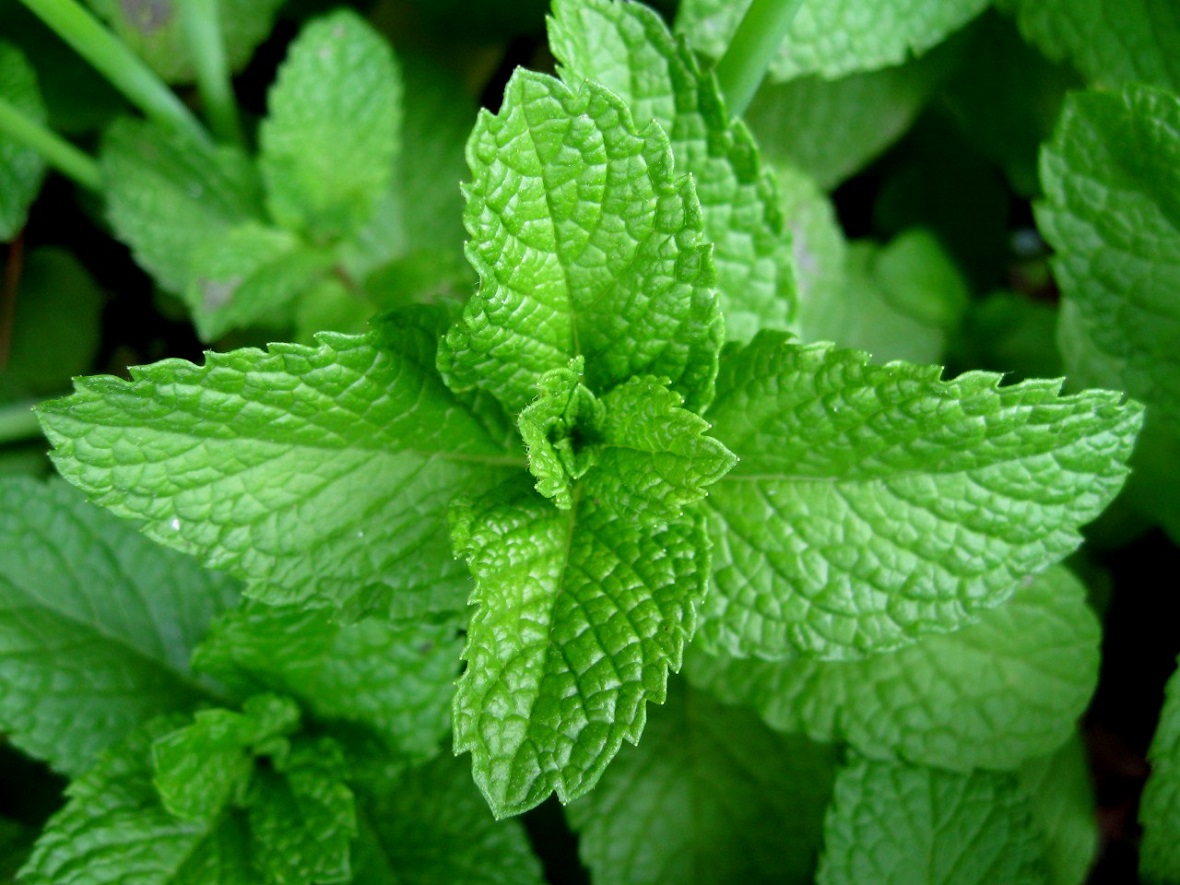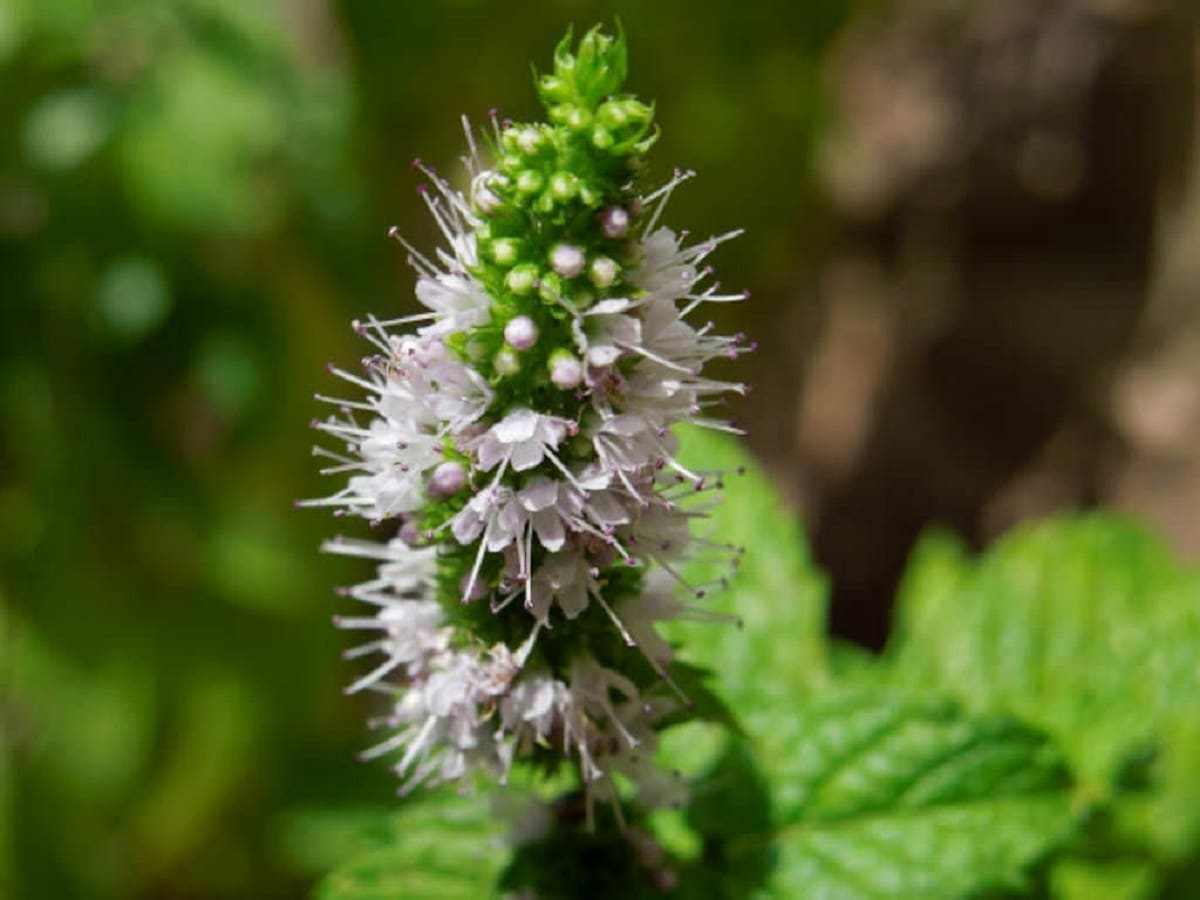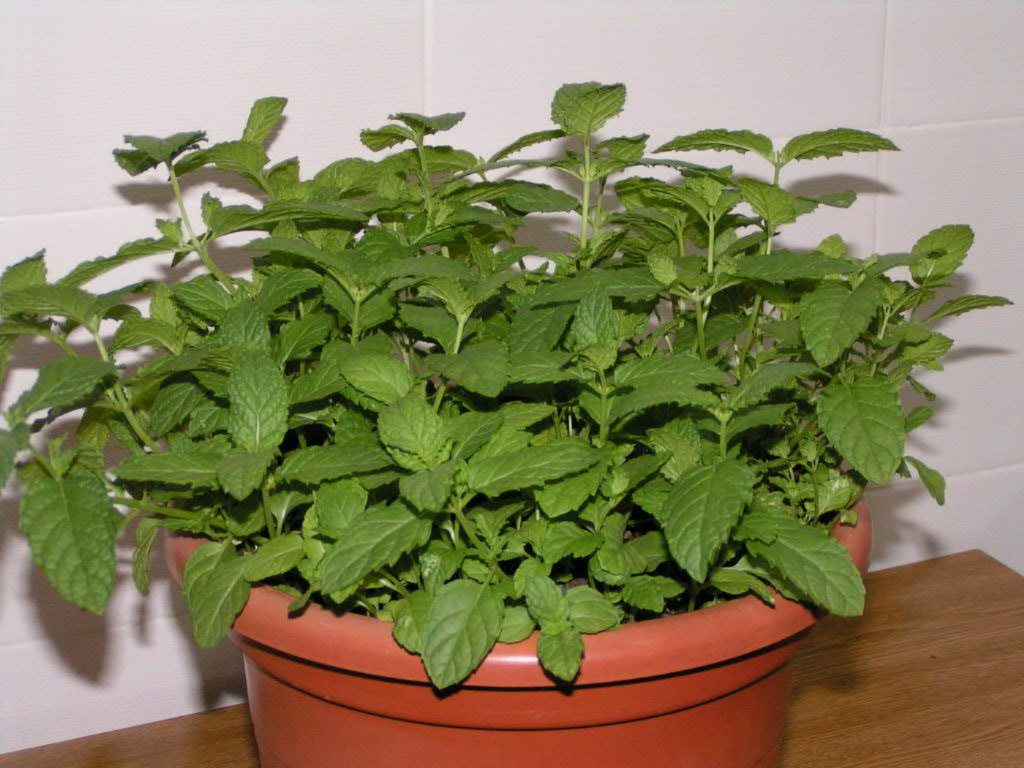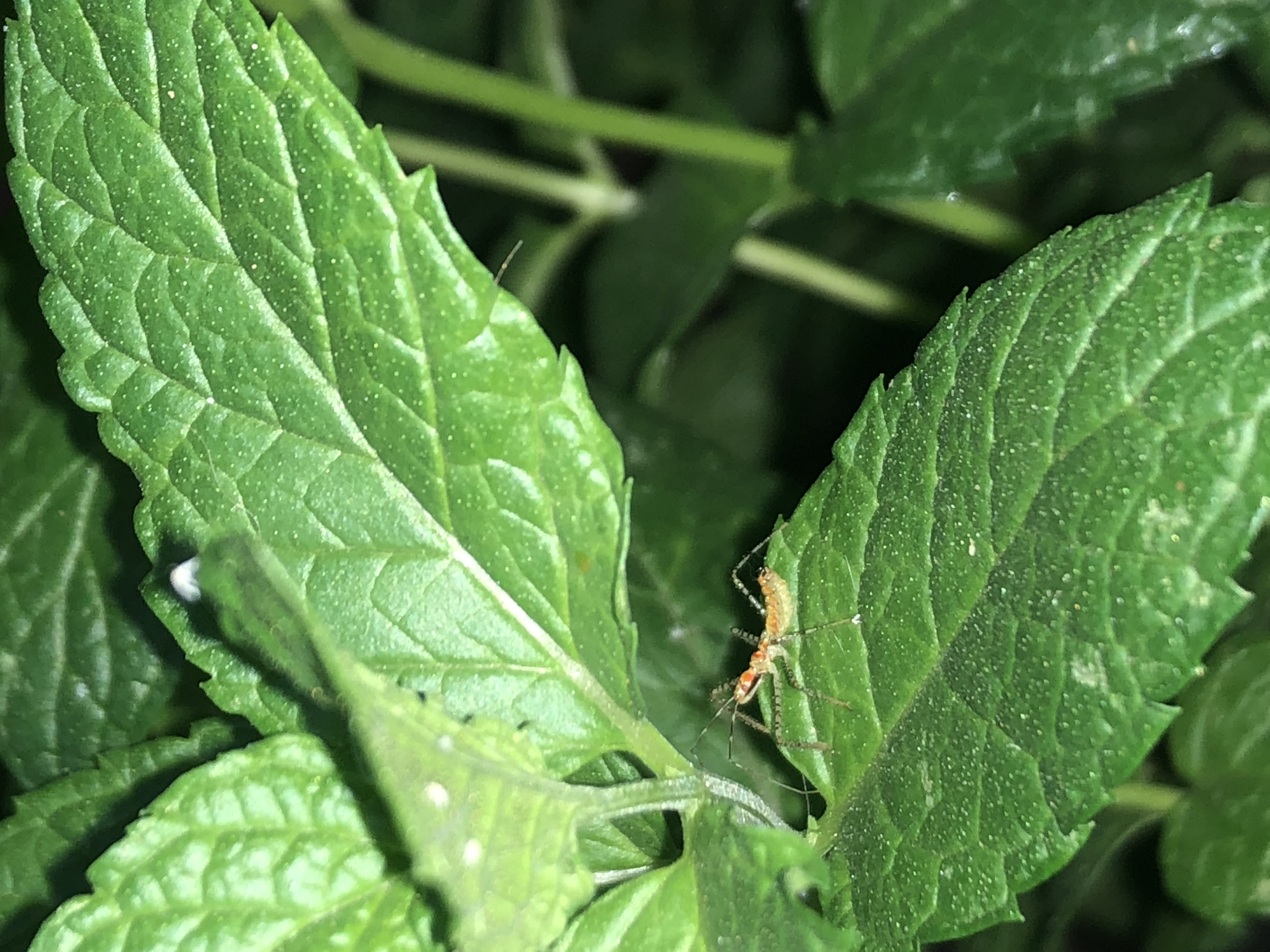In this article we present the Care of Peppermint, its characteristics, planting and above all the medicinal benefits. It is a plant that is known as analgesic, antiseptic, digestive to name some of its properties. Continue reading and learn more about this wonderful potted pharmacy, in this article.

peppermint
Peppermint care is very simple, as it is a plant of great resistance and adaptability. This aromatic plant with great medicinal properties is very easy to grow and maintain. It is usually used not only for medicinal purposes but also as part of the set of species in the kitchen, for the preparation of infusions and even for cosmetic purposes. Peppermint is scientifically known as Mentha spicata or popularly as mint or garden mint.
Features
Peppermint is a herbaceous plant, which was born from the union of two mints, black and white mint, which can reach a height of up to 30 centimeters, its leaves are perennial that are born in the opposite way, which makes it very dense, of color light green, with a rough blade and a serrated margin, oblong in shape and with a small petiole. This plant blooms during spring, its flower is a spike with small white terminal inflorescences. It multiplies from roots and not from seeds.
Main Care of Peppermint
Like any plant, peppermint must have certain care to guarantee adequate foliage and flowering, which will bring great benefits based on its properties. Here we present the basic care that you must apply and you will be able to show off a beautiful and beneficial plant.
Irrigation
Irrigation is one of the main cares for mint, as it requires well-hydrated soil. This should be done on a regular basis, it is advisable that during the first year of planting irrigation be done twice a week, after this time it can be done once a week. It is also necessary to take into account the ambient temperature because on the hottest days of summer it can be watered up to 3 times a week.
Pruning
Among the care of mint is pruning, it is advisable to do it after the flowering period, in this way the stems will grow and abundant leaves will sprout. It has an extensive and invasive root system that can be pruned flush with the ground and is capable of sprouting again. This can be done at any time of the year if the plant has dry or diseased leaves.
Rusticity
Another care of mint is resistance to climates. It should be taken into account that this plant can withstand frosts of up to -5° but it is not recommended. This plant must receive a good amount of light but not directly so that it stays healthy and prevents the stems and leaves from burning, it can also adapt to semi-shade. The ideal temperature for a good development of this plant is between 15 and 30 degrees Celsius.
Fertilizer
Another of the care of mint is the fertilizer, it is advisable to change the fertilizer every spring that is slow-release organic base that placed in the substrate of the plant can prevent diseases and pests, even more so if the plant will be used for culinary or medicinal purposes. If the plant is in a pot, it should be fertilized with universal substrate and perlite, now if it is in the ground it is highly resistant, including limestone soils, it should only have good drainage (in both cases).
Growth
The growth of mint will be determined by pruning, the ideal is to cut 5 or 10 centimeters from the ground, this will make the plant stronger and strong stems will come out that will later have abundant shoots, in this way it will look denser.
Plagues and diseases
This plant is vulnerable to pests and diseases, so certain care must be taken so that the plant does not suffer from these scourges. Here we present the most common diseases and pests on this plant.
Pests
White fly: this pest is usually located on the underside of the leaf, its reproduction on this plant during spring and summer. The main consequence is that these flies bite the plant to extract the sap, generating a kind of molasses which attracts the ants and together they completely destroy the plant. For this reason, it is recommended to use neem oil after having washed the plant with a potassium soap.
Aphids: In the case of this plague, they always seek to attack mainly the young shoots. Their larvae irreparably damage the leaves, making large galleries, while the adults make small cuts to feed on the sap in the leaves and buds. Like whiteflies, these bites produce honeydew that attracts ants. To exterminate these aphids it is advisable to use soap and water in addition to extracting the leaves that are affected.
Diseases:
Rust fungus: In mint, the rust fungus is the most common because it favors warm temperatures and high humidity. It belongs to the rapidly reproducing genera Puccinia and Melampsora. This fungus appears on the underside of the leaf during the rainy season, as tiny orange lumps and yellow spots on the ha, which are nothing more than the accumulation of spores which could lead to the death of the plant in a few days. .
For this reason, preventive and curative treatments must be carried out, initially removing the affected leaves and treating it with a fungicide, and in the case of preferring to do so with organic treatments, the Bordeaux mixture is recommended and if it becomes serious, it is best to burn the plant, disinfect the soil and plant a new one.
Potted Peppermint Care
Peppermint is a generous plant that is capable of adapting to any environment, with just a little care we will always have a leafy and beautiful plant that will benefit us with all its benefits. In the event that the plant is planted in a pot, it should be taken into account that it can be made of clay or plastic, with a universal substrate mixed with 30% perlite.
During the summer days it is recommended to water it at least three times a week (depending on how high the temperature is) and during the warmest or coldest days it could be done once or twice a week. Its multiplicity is done through root cuttings, this will suffice to have a new plant.
Peppermint care in winter
Among the care of the good grass in winter, the first place is the excessively cold climate, although this plant is highly resistant, it is not recommended to expose it to extreme climates because it tends to deteriorate a lot. It can be considered that the ideal for this plant is a temperature of up to 15 degrees.
Spearmint Properties
This plant with great benefits is used not only for ornamental purposes but is also useful in the cosmetic, culinary and, above all, medicinal fields.
In medicine
Peppermint can be taken as an infusion to relieve and even cure conditions such as diabetes, since its high menthol content is capable of regulating the lipids found in the bloodstream. It has antioxidant properties regulating cell oxidation and therefore prevents inflammatory processes. It is also used as an antispasmodic and analgesic treatment, due to its mint content it serves as a muscle relaxant. It has antibacterial properties due to its phenolic components that counteract bacterial activity.
Among its properties is also the favoring of the digestive part, since it increases the speed of the food passage, which in turn significantly improves the symptoms of irritable bowel. In another order, peppermint can be used on burns for its refreshing properties. Its intake is recommended when you have cold discomfort. Inhalation of vaporizations of this plant improves alertness and reduces fatigue. It is used in the treatment of fungus on the skin. It is also used as part of slimming treatments as it helps to eliminate the fat contained in the body.
In cosmetics
Peppermint is used in skin treatment that helps maintain its luminosity and good appearance. It has anti-inflammatory, antiseptic and astringent properties, which notably improves acne. For this, a peppermint mask should be applied, which will help reduce the inflammation that this disease generates, while reducing the symptoms of oily skin. This plant is the main component of products such as shampoo, toothpaste, soap as its main component. In nail treatments it is ideal because it beautifies them, makes them grow and eliminates any infection that may occur.
In gastronomy
This plant gives a flavor and aroma to different recipes such as salads, drinks, desserts, sauces, soups, meat, fish, seafood, lamb and infusions. This makes it a culinary component par excellence because it not only aromatizes but also gives a unique flavor to recipes. It should be noted that mint should not be combined with thyme or oregano.
Contraindications
This plant has multiple properties and is classified as a medicinal plant par excellence, but it should also be taken into account that its consumption is not recommended by pregnant or breastfeeding women, young children, people who suffer from heartburn or some type of ulcer. . In these cases, the treating physician should be consulted first.
Fun Facts about Peppermint
Did you know that the thinker Aristotle stated that this plant incited lust. This plant has repellent properties for mice, placing branches where they frequent and its strong smell makes them flee from the place. Its use on the scalp accelerates growth, prevents hair loss and keeps it healthy. Since time immemorial this plant has been used as a flavoring agent, perfume and air freshener. This mint among the 20 that exist is the most used in the kitchen.
If you want to know more about peppermint, watch the following video.
To learn more about medicinal plants, I invite you to visit the following links:



